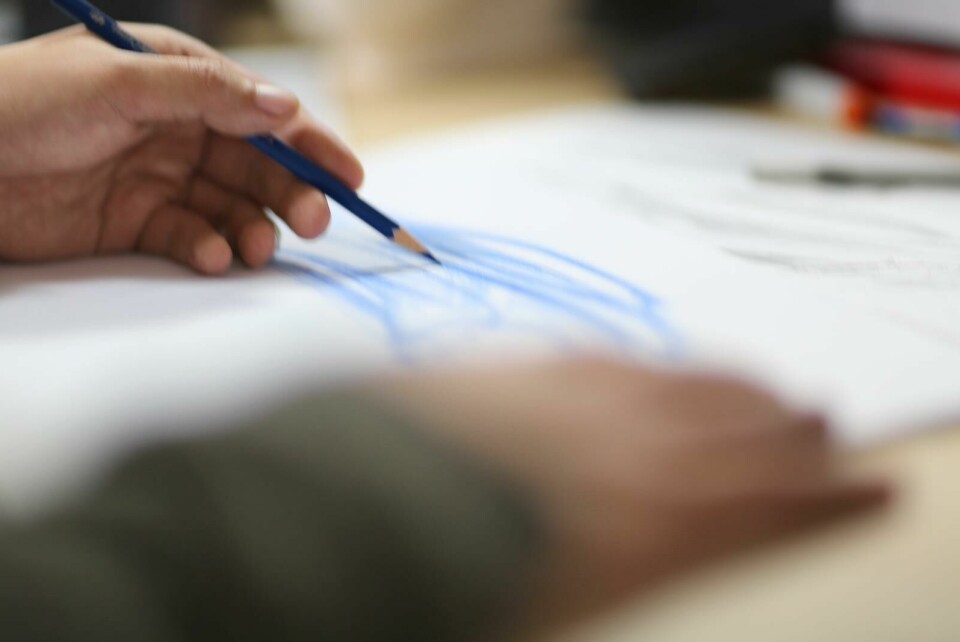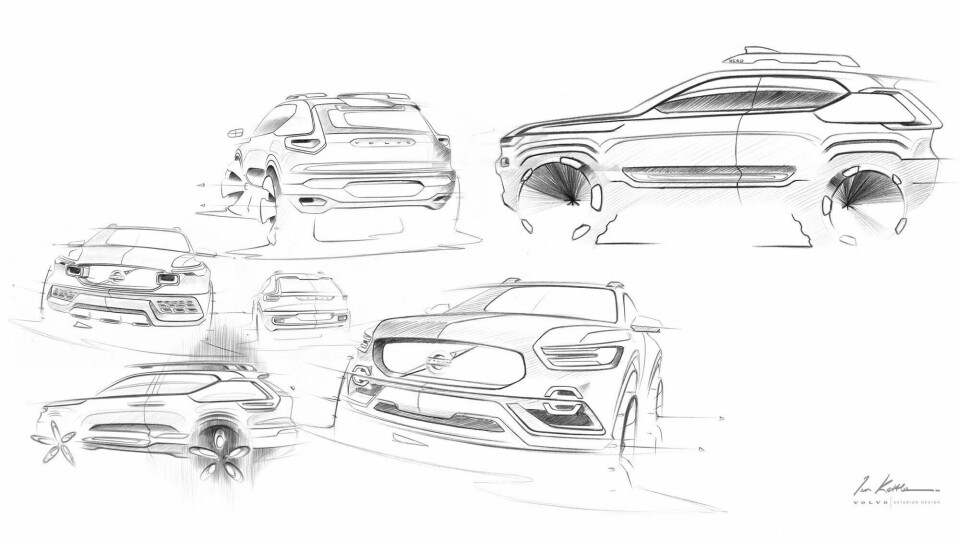
The enduring art of sketching in car design
As part of Car Design News’ April focus on sketching, we speak to a range of voices in the automotive industry to learn how sketching is viewed in the modern day and what the future holds for this art form
There are plenty of well-known debates – the chicken or the egg, manual or automatic – but in car design, there’s no argument. Every car, from the wild hypercar to the humble city runaround, starts life the same way: with a sketch.
Once provided with the right equipment, whether a digital tablet or on the back of a napkin, talented automotive sketchers can in seconds use bold lines to create the soul of a supercar, SUV or something that defies categories altogether. That’s the magic of the sketch.
Welcome to the world of automotive sketching – where a few flicks of the wrist capture the thrill of car design, even as AI looms larger in the creative process. Sure, digital tools are getting smarter, but sketching remains the designer’s secret weapon, a straight line between raw imagination and reality (excuse the pun).
Yet, as technology evolves, so do the questions: What is the future of sketching? How does it fit into an increasingly digital workflow? And has technology ‘democratised’ the art of sketching? To find out, Car Design News spoke with designers across the industry – from Lamborghini’s top creatives to McLaren’s design assistants, Mahindra’s rising stars to independent visionaries.
The verdict? The pen (or pencil) still reigns supreme. AI might be fast, but it can’t match human touch within a great sketch.
Why sketching matters more than ever
In a world where AI can generate thousands of concepts in mere seconds, why are designers still reaching for their pens? Because, as Mitja Borkert, design director at Lamborghini, put it: “Sketching breathes air into the lungs of a designer.”
The answer is simple: sketching comes from the soul. As Jane Kim – junior creative designer at Mahindra Advanced Design Europe – commented, sketching allows designers to think freely, communicate instantly and capture the essence of an idea before it gets bogged down in technical constraints.
Whether it’s a high-energy gesture drawing or a precise technical sketch, a good drawing can express more in a few strokes than paragraphs of explanation. In other words, before a design goes digital, it needs to be human.
Holding a pen signals my brain to unlock creativity, it’s not about the sketch itself, it’s about opening the creative door in my mind
Alessia Loreley Ombrella Marqués, a freelance automotive designer, added that sketching allows designers to be spontaneous, where sometimes a funny mistake can turn into an entirely new idea that leads the team in a different creative direction.
Even just the act of picking up a pen can inspire designers, Maserati’s design director Klaus Busse stated in Interior Motives: “Holding a pen signals my brain to unlock creativity, it’s not about the sketch itself, it’s about opening the creative door in my mind.”
The rise of AI: threat or tool?
The elephant in the room is AI. Generative design tools can spit out sleek forms and variations in seconds, raising the question: is the hand-drawn sketch in danger of becoming obsolete?
Not so fast, say designers. AI is fast, but it lacks what makes a great sketch great – personality. Kim put it best: “AI expands possibilities, while sketching remains a direct, instinctive way of shaping ideas. It’s not just about drawing; it’s a form of thinking.”
Borkert agreed, noting that while AI can generate ideas, it can’t replace the deep understanding of form and proportion that comes from years of sketching practice. “A good sketch remains a good sketch,” he insisted. “It’s like playing an instrument or excelling in a sport – you have to train for it.”
Aston Martin’s Marek Reichman summarised: “As creatives, we have the ability to sketch an idea that doesn’t exist on the planet. AI is nothing without the imagination to use it.” AI can generate concepts, but it takes a designer’s trained eye and artistic sensibility to refine them into something truly groundbreaking.
What makes a great car design sketch?
Not all sketches are created equal. A good sketch isn’t just about technical accuracy, it’s about emotion, energy and intent.
Jessica Suh, design team lead at the consultancy Ideenion in Germany, added that the best sketches do two things at once: inspire and inform. “Quick doodles are great for conveying mood, but a team needs structure and clarity. The best sketches balance both.”
For Marqués, it’s about passion. “A sketch without love is just lines on paper. You can feel when someone truly enjoys what they’re drawing – it’s the difference between a lifeless shape and one that sparks excitement.”
The role of sketching in the digital age
Today’s designers don’t just sketch – they bounce between paper, Photoshop, Alias and Blender. The workflow is more complex, but sketching is a constant thread.
“Pen and paper remain an effective and efficient tool,” said Borkert. “With a photocopy machine, you remain unbeatable even today.”
Kim sees the future as a blend of old and new. “Whether it’s on paper, a tablet, or even in mixed-reality environments, sketching will always be key,” she remarked. “What might change is the way we blend analogue and digital – like drawing in the 3D space with VR tools or using AI to assist with perspective and lighting.”
Dalal Elsheikh, senior product designer at Rivian, goes further to point out that sketches don’t have to be done purely with traditional media: “Digital tablets have made sketching and rendering a whole lot easier, especially when a designer needs to undo a stroke or duplicate an idea. It’s certainly saved many trees.”
Is technology making sketching too easy?
One of the big debates in design circles is whether technology has ‘democratised’ sketching. Digital tools allow designers to refine sketches instantly, but is something being lost in the process?
“When I studied at CCS Detroit, we weren’t allowed to touch Photoshop until sophomore year,” Suh recalls. “We had to master sketching fundamentals first.”
While technology has made sketching more accessible, it has also introduced shortcuts. Elsheikh argued that using AI as a designer means you are settling for “good enough, and that’s just not the kind of designer I want to be.”
On the other side, Sohyun Yoon, an F-Series interior designer at Ford, views technology in a more positive light, seeing this as a power that has opened the industry to those not familiar with drawing: “I believe this can have a positive impact on designers, as people bring diverse experiences that can inspire and influence one another in meaningful ways.”
The future of sketching: What’s next?
Will designers still be using pen and paper a decade from now, or will new tools redefine the process? The consensus: sketching will evolve, but it won’t disappear.
“You could be sitting in a café, eating a macaron, and sketching an idea on a napkin instead of writing AI prompts or opening Blender,” Suh joked.
At the same time, designers recognise that digital tools will only become more integrated into the process. AI-powered sketch refinement, VR concept sculpting, and real-time 3D sketching are all on the horizon.
I envision a future where sketches could evolve into dynamic, interactive pieces, rather than remaining fixed
Elsheikh recalled speaking to a younger design student about which marker pens she uses in school: “She told me they didn’t use markers at all and most of their renders were done digitally with their 3D tools. I was shocked because when I was in school I spent a cumulative hundreds of dollars on my markers, collecting one $6-$12 Copic at a time.”
But all hope is not lost, Elyza Cho, design assistant at McLaren Automotive, said: “Even with powerful digital tools like Gravity Sketch or Blender, I still start with pen and paper. For a designer, sketching by hand isn’t just a skill, it’s a mindset that encourages creativity and freedom. The key is to do more and more doodles!”
Looking ahead, Yoon envisions a world where sketches become more interactive. “I envision a future where sketches could evolve into dynamic, interactive pieces, rather than remaining fixed” she said.

Sketching isn’t dead – it’s thriving
For all the digital advancements, one thing is clear: sketching isn’t going anywhere. Whether it’s Borkert, still filling sketchbooks in a world of digital renderings, or junior designers refining their craft manually and valuing pen and paper, sketching remains a cornerstone of automotive design.
The tools may evolve, but the essence of sketching – the act of putting pen to paper to bring an idea to life – will always be part of car design. And as long as designers are sketching, the future of automotive design remains in good hands.









